Australia’s politicians, economists, the media, and think tanks continually claim that a lack of supply has driven the housing crisis. They also claim that if the nation just built more homes, the crisis would magically resolve.
This ‘lack of supply’ reasoning falls apart once you examine the data.
It turns out that Australia has one of the largest construction workforces in the world relative to our population:

Moreover, as independent economist Tarric Brooker showed on Twitter (X), “Australia completes more homes per capita than almost anywhere in the developed world. When the population is constantly grown at such a large rate, even a world beating level of construction still can’t keep up”:
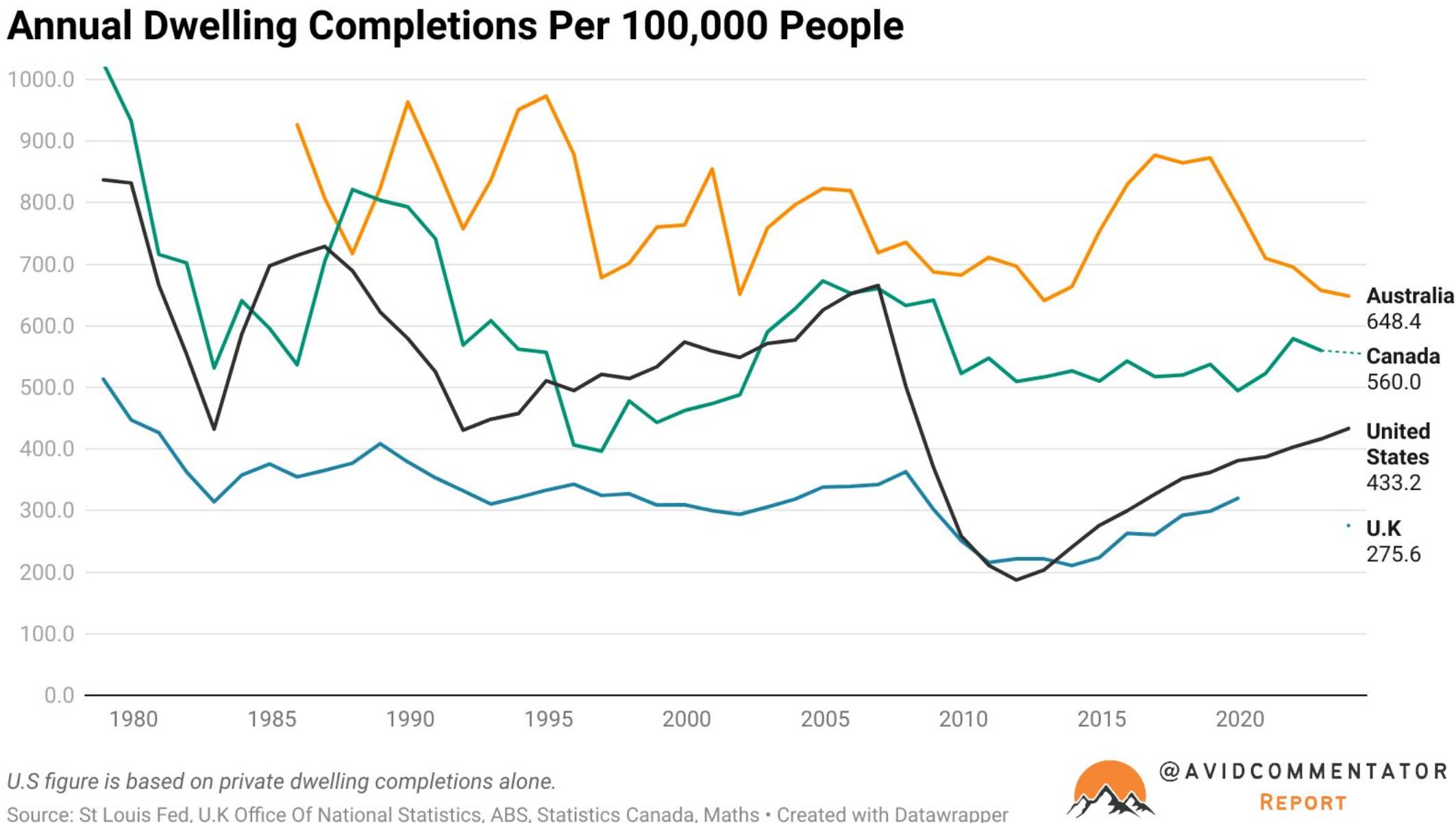
The inconvenient truth is that Australia’s structural housing shortage has more to do with demand – i.e. excessive levels of population growth – than an inability to build housing.
The federal government dramatically increased Australia’s net overseas migration (NOM) from the mid-2000s, as illustrated in the following chart, which is projected to continue indefinitely:
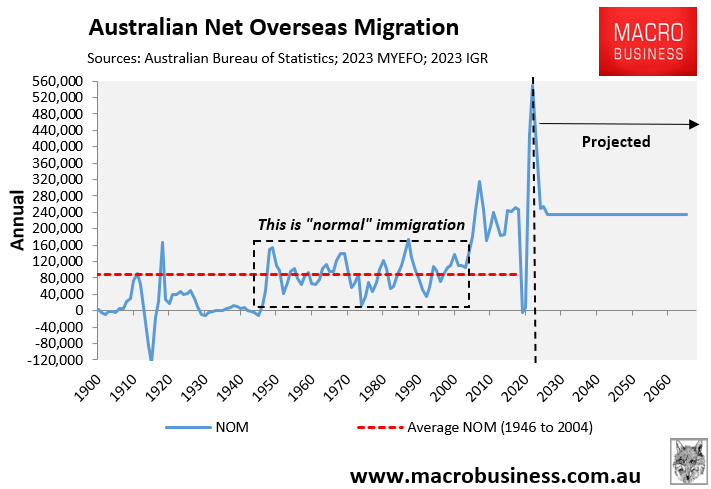
In the 15 years to 2004, Australia’s NOM averaged 91,000 a year. But in the 15 years to 2019, Australia’s NOM averaged 220,500 a year, representing a 142% increase in annual NOM.
Even over the last four calendar years (2020–2023), Australia’s NOM has averaged 245,500 per year.
As illustrated in the following chart, Australia has experienced the strongest population growth since 2005 among major developed nations:

The below chart shows the population growth between 2001 and 2023 across the major capital city markets:
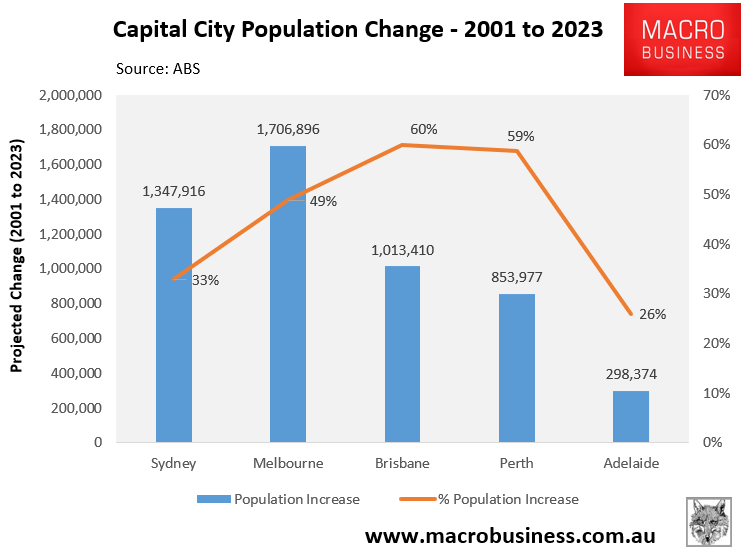
As you can see, population growth across the major cities has been extreme, with Melbourne (1.7 million) and Sydney (1.35 million) experiencing the strongest growth in numbers terms and Brisbane (60%) and Perth (59%) recording the strongest growth in percentage terms.
According to Australian Bureau of Statistics (ABS) projections, Australia’s population will grow to 43.9 million people by 2071, representing an increase of around 16.5 million from the current population of 27.4 million.
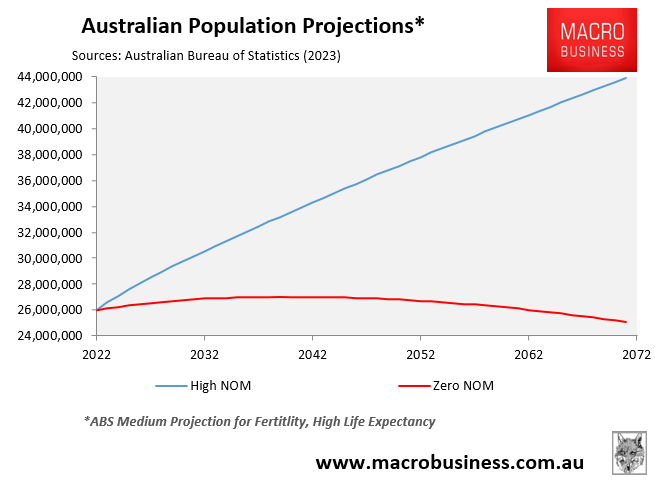
This is the equivalent of adding another Sydney, Melbourne, Brisbane, Perth, Hobart, and Canberra to Australia’s current population in only 48 years!
It would also require the construction of at least 7.5 million homes accounting for demolitions to accommodate the projected population surge.
It is also worth pointing out that it took Australia 212 years to reach a population of 19 million people in 2000. Yet, the population is officially projected to grow by another 24.9 million people in only 71 years!
The next chart plots the actual populations of Australia’s major capitals in 2001 versus their projected populations in 2071:
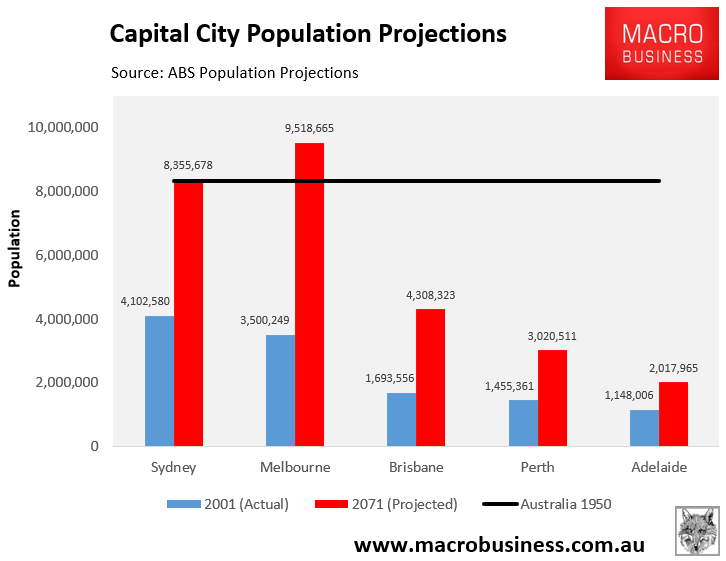
As you can see, Melbourne (9.5 million) and Sydney (8.4 million) are projected to have larger populations than Australia’s entire population in 1950!
The next chart shows the projected population increase between 2001 and 2071 by major capital in both number and percentage terms:
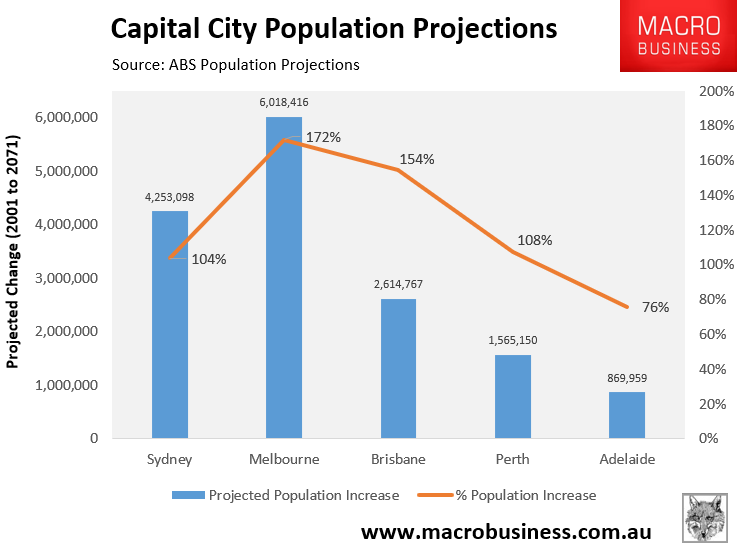
The growth is off the charts, led by Melbourne, which is projected to grow by an obscene 6 million people (172%) in only 70 years!
The next time that somebody tries to tell you that Australia’s housing crisis is a “supply issue”, show them these charts on Australia’s extreme immigration-driven population growth.
Australia will never build enough homes so long as its population grows like an out-of-control science experiment.

